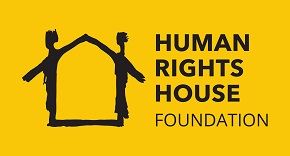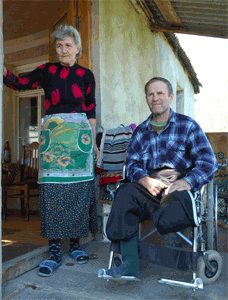 A covert follow-up investigation on October 2 by reporter Jeffrey K. Silverman, and a freelance photographer, Ian Carver (both American citizens) revealed cluster bombs were used in Georgia’s Gori region, (security zone), as earlier documented by the Human Rights Watch in South Ossetia proper. The two had slipped through the Russian block posts on the edge of the security zone between Gori and South Ossetia by posing as locals and using local transport.
A covert follow-up investigation on October 2 by reporter Jeffrey K. Silverman, and a freelance photographer, Ian Carver (both American citizens) revealed cluster bombs were used in Georgia’s Gori region, (security zone), as earlier documented by the Human Rights Watch in South Ossetia proper. The two had slipped through the Russian block posts on the edge of the security zone between Gori and South Ossetia by posing as locals and using local transport.
Their immediate objective was to document victim statements and to take photos of the extent of the use of cluster bombs, the damage inflicted against civilian and military targets by both the Russian and the Georgian army. Their full findings, including photos, have been shared with the Human Rights Centre in Tbilisi.
The physical damage and telltale evidence from cluster bombs appear to have been delivered by a BM-21 Grad (Hail) multiple rocket launchers, commonly known as Katyushas. Rockets and cluster bombs were apparently used in the attacks on civilians and soldiers in the conflict zone at the time of hostilities by both sides. Such launchers are notoriously inaccurate anti-personnel weapons and have been especially designed to cause the maximum number of casualties. However, it is uncertain as to which side is definitely responsible for the use of cluster bombs on the small village of Brotsleti.
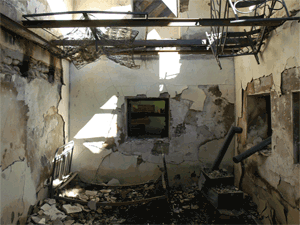 Their village walk, staying on beaten paths, revealed the wide distribution of cluster bombs in Brotleti. This was the same village visited six weeks ago by two journalists Jeffrey K. Silverman, who also works with Georgian Public Broadcasting, GPB, and Antony Butts, a freelance British documentary film producer. Locals had told them that some people had been killed, including at least three Georgian soldiers, one civilian and several others were wounded. It was debatable, however, at the time if they had been killed by a regular bomb or fell victim to cluster bombs.
Their village walk, staying on beaten paths, revealed the wide distribution of cluster bombs in Brotleti. This was the same village visited six weeks ago by two journalists Jeffrey K. Silverman, who also works with Georgian Public Broadcasting, GPB, and Antony Butts, a freelance British documentary film producer. Locals had told them that some people had been killed, including at least three Georgian soldiers, one civilian and several others were wounded. It was debatable, however, at the time if they had been killed by a regular bomb or fell victim to cluster bombs.
The first undercover efforts in the security zone provided some of the initial footage of looted and destroyed Georgian villages for GPB. Some of this material has already been aired for a larger Georgian and international audience. At the time, however, Russian and Ossetian paramilitary patrols were active. The constant foot patrols made it hazardous for them to take the risk of spending the extra time needed to properly investigate exactly what had happened in detail. They wanted to learn the kinds of ordinance that had been actually involved and the sources of that material.
Cluster bombs have a wide dispersal pattern and cannot be targeted precisely, making them especially dangerous when used near civilian areas. Cluster bombs are usually used in very large numbers and have a high initial failure rate which results in numerous explosive "duds" that pose the same post-conflict problem as anti-personnel landmines.
Human Rights Watch, an international human rights watchdog, has called for a global moratorium on the use of cluster bombs because they have been shown to cause unacceptable civilian casualties both during and after conflict.
Jeffrey Silverman, who made several trips in the Russian controlled security zone, including some parts of South Ossetia, and Ian Carver, a freelance journalist living in Georgia, returned with him on October 2 to “fully document” the use of cluster weapons in Brotsleti, a village near the main road leading to the South Ossetian capital of Tskinvali.
As Ian shares in discussion with the Human Rights Center, a local non-governmental organization – “now is the peak time for the apple harvest in the region but for many farmers this harvest will be impossible to collect. Villagers are aware of the menacing threat and are fearful to harvest their crops, visit their fields, orchards and even tend to their livestock. As to our knowledge no foreign organizations or Georgian authorities have yet been able to enter this village of the security zone because of the Russian block posts.”
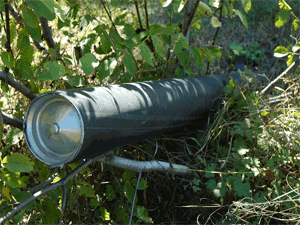 The two had learned of one man who had a close encounter with a cluster bomb - he died a month later in hospital. However, most victims are immediately killed. Also, during the visit to Brostleti, a picture was taken of a man who lost his leg to a regular bomb. His family was afraid to harvest this year’s crops and was keeping their cattle from freely grazing in fields that were deemed unsafe.
The two had learned of one man who had a close encounter with a cluster bomb - he died a month later in hospital. However, most victims are immediately killed. Also, during the visit to Brostleti, a picture was taken of a man who lost his leg to a regular bomb. His family was afraid to harvest this year’s crops and was keeping their cattle from freely grazing in fields that were deemed unsafe.
Witness Statements
They also tracked down in Kitsnisi, another village, the former grave of a person summarily executed in the security zone. Witness statements have not been translated yet but they will be published as part of a annual human rights report and incorporated into future articles and reports for the web journal www.humanrights.ge
Considering that a “real threat of cluster bombs and conflict escalation still exist, now is the time to go beyond pointing the finger as there has been enough duplicity, enough fear-mongering and more than a fair share of wars and destruction for tiny Georgia, which has been portrayed until recently as a fledgling democracy by the international media and the United States government.
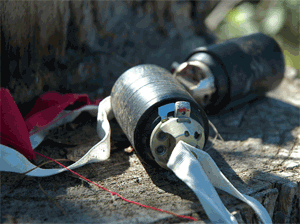 Those living in Georgian villages in the security zone know the true face of the consequences of war. They are tired of the political rhetoric. They said that they are now trying to piece their lives back together and start out afresh. They only want to be able to continue working in agriculture and make sure that they or their children will not be the next victim of cluster weapons.
Those living in Georgian villages in the security zone know the true face of the consequences of war. They are tired of the political rhetoric. They said that they are now trying to piece their lives back together and start out afresh. They only want to be able to continue working in agriculture and make sure that they or their children will not be the next victim of cluster weapons.
Jeffrey and Ian also checked out an ammo dump that the Georgians left behind during the turmoil of the unorganized retreat in the village of Kitsnisi in early August. This unattended store of foreign weapons, some from Germany, which had been earlier filmed for an international documentary, entitled “the aftermath of the Georgian-Russian war” had been totally abandoned. It was left open for almost anybody, including foreign journalist to come and scrounge through.
The interest in these weapons for the foreign media was not only in terms of the consequences of the war in the region at the time but to also look deeper into the actual source of the weapons, and which companies and countries are profiting from the sale and distribution of weapons of terror and mass destruction. Already this effort has resulted in threats of a law suit from one of the suppliers of military hardware to Georgia against Jeffrey Silverman. He had shared a scanned copy of packaging labels with one of the suppliers, the manufacturer and various media and human rights associates.
Weapons Stash
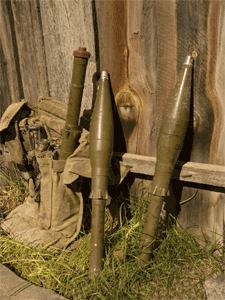 In follow-up to the first visit back in late August by the two foreign journalists, it was learned from neighbors close to this seemingly well-concealed weapons stash that the Russians have since cleaned it up “so nicely” – so much so that one would not even know it existed in the first place.
In follow-up to the first visit back in late August by the two foreign journalists, it was learned from neighbors close to this seemingly well-concealed weapons stash that the Russians have since cleaned it up “so nicely” – so much so that one would not even know it existed in the first place.
Moreover, it was clear that the Georgians had stockpiled hundreds of Serb-made mortars and 1000’s of RPG in a cedar and pine tree grove on the edge of a village (as a ploy to keep the Russians from targeting the village for threat of killing innocent civilians).
There were also empty crates found which the German manufacturer of the explosive product coded “1.1 WE UN 0464.” The attorney for the manufacturer later claimed is a licensed mine-clearing device - “a device used to clear quickly a safe pathway across a minefield to allow personnel to cross the hazardous area (for example to allow medical teams to reach injured personnel or to rescue mine-damaged vehicles).”
Russian aviation appears to have been intentionally “inaccurate”. In their bombing runs as many craters can be found in nearby fields while only a few bombs fell in the village. Fortunately there were no civilian causalities. Perhaps the Russians will be able to find a good market for these “mine clearing devices” and other abandoned ordnance, which may or may not include cluster weapons and their delivery systems.
Jeffrey Silverman states with a smirk, “It is as if the Russians only wanted to scare the Georgian army away from the weapon depot and not to blow it to hell and back.” Silverman is former US military, forward observer … he makes this claim as the ammo dump was such an easy target.
“It was close to the former office building of the collective farm, which was painted pink and in a small grove of pine and cedar trees. It is interesting to note that no cluster bombs were used in this instance, which would have otherwise been an effective anti-personal weapon and would have played havoc, not only on the Georgian army but their not-so-well-concealed weapon stockpile.”
Perhaps the Russians were more interested in securing the stocks than destroying them. It is clear that the Russians had good human intelligence as to this site, as no bombing related causalities were reported in the area. It is clear that the weapons were quickly abandoned in the rapid mass retreat of the Georgian troops when the heavy bombs started falling in the village and nearby open fields.
After the Russian “cleanup” only one RPG was left behind, and locals told how the Russians had taken their time in hauling off the many crates of weapons, and they had completed this task only after they removed other large stockpiles of weapons from the regional town of Gori.
Ian Carver and Jeff Silverman placed the “only weapon” to be found, a single RPG, into the shallow grave of one man who had been summarily executed back on the 7th of August - his family had since dug up the body several weeks later for reburial in his home village. The idea was to place the RPG in grave, for future safekeeping, until experts could safely remove it, with the hope that children would be fearful of playing in a recently opened grave.
After returning to Tbilisi, Ian Carver immediately contacted the Halo Trust, an international organization involved in de-mining operations to inform them about the situation in the security zone. He also pointed out on a map where unexploded ordnances could be located.
The Halo Trust greatly appreciated the tip and told how they had been turned back several times by the Russian soldiers when they had tried to enter the zone. However, their teams are fully aware that the harvest season is underway and that it is necessary to clear the area as soon as possible, especially since winter is rapidly approaching and leaves will soon conceal many of the cluster bombs.
Patrick Worms, one international public relations representative for the GoG wrote on October 6, …“As you know, it [such information] helps to accurately assess the risk and the steps needed for de-mining; and the second is that it helps figure out what's going on. The context is that we have Intel that in at least one village, Georgian bomblets were found which were probably planted, rather than fired (the reason the investigators think so is that all of the bomblets that were found were unexploded, which is suspicious in a munitions with a maximum reported failure rate of 10%). So, while I of course do not know who fired what when and at whom during the war (that evidence is being collected by reporters, observers and human rights activists like you), I do know - or at least strongly suspect - that Russian forces, following their documented use of cluster munitions, are trying to "share the blame" by scattering unexploded ordnance picked up at the Roki tunnel entrance (where the Georgian Army disclosed it used cluster munitions) and [we] don't want to jump to conclusions.”
It is clear that both sides have used cluster bombs in the August war. However, it is difficult apportioning blame. It would be necessary to determine which particular bomb killed a particular person. It will be even more difficult to prove who actually fired or dropped the cluster devices.
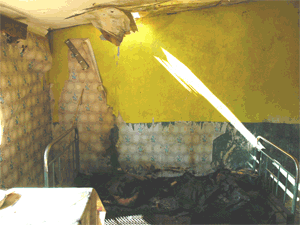 Many in the West and Georgia appear to be too scared to be seen to taking sides in such a discussion, and this is despite the fact they warble on about how bad these bombs are all the time. One international journalist working with a New York based newspaper asked the Deputy Georgian Minister of Defense about Israeli Cluster bombs back in August. He says that it is true. Insists, however, that they were not dropped on civilians ….”
Many in the West and Georgia appear to be too scared to be seen to taking sides in such a discussion, and this is despite the fact they warble on about how bad these bombs are all the time. One international journalist working with a New York based newspaper asked the Deputy Georgian Minister of Defense about Israeli Cluster bombs back in August. He says that it is true. Insists, however, that they were not dropped on civilians ….”
Unfortunately there are always some things people do not want to hear just because this makes the situation more complicated. This article isn’t about supporting or attacking Georgia or Russia over cluster bombs, it is about both sides using cluster bombs (and that is a human rights issue).


